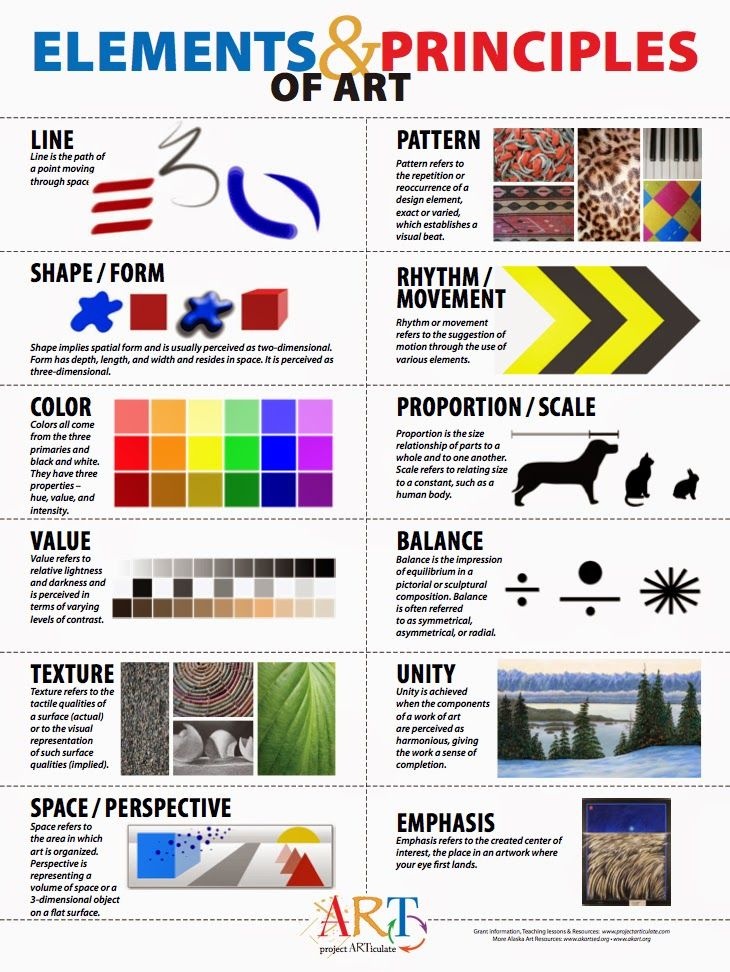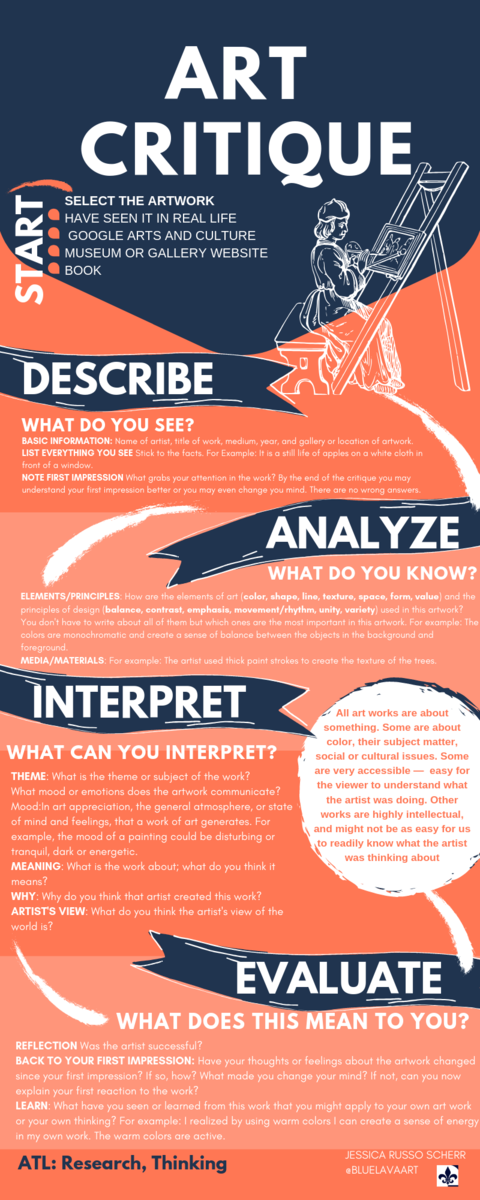What to include:
- Basic Information
- Principles, Elements & Techniques
- Conceptual Significance which often includes Material Significance, Context, and Cultural Significance
It's important to note that these steps are not mutually exclusive and can be used in combination to build a deeper understanding of the artwork's conceptual significance. Also, different artworks may require different approaches and methods to be fully understood.
Basic Information:
When citing an artwork, it is important to provide information about the artist, the title of the piece, the date it was created, and the location where it is currently held. The format for citing an artwork can vary depending on the style guide you are using, but one commonly used format is as follows:
Artist Last Name, First Name. Title of Piece. Date Created. Location of Piece (Museum or Institution, City).
For example, if you were citing the artwork "Starry Night" by Vincent van Gogh, your citation would look like this:
Van Gogh, Vincent. Starry Night. 1889. Museum of Modern Art, New York.
It's also important to note that if the artwork is a photograph or a digital image, you should also include the creator of the photograph or the source of the digital image, as well as the date it was accessed online and the website URL if available.
Example:
Van Gogh, Vincent. Starry Night. 1889. Museum of Modern Art, New York.
Photograph by John Smith. Accessed January 1, 2022. https://www.example.com/starrynight
It's important to consult the style guide you are using for specific guidelines on how to cite artworks and other sources.
Principles and Elements and Techniques:
The elements are the what and the principles are the how.
Together, the principles and elements of design help to create a composition that is visually pleasing and has a clear meaning.
The elements of art are the building blocks of a work of art. They include line, shape, form, space, texture, value and color. When analyzing an artwork, one might consider how the artist used line to create movement or emotion. For example, if an artwork has diagonal lines, it creates a sense of movement and tension. Curved lines create a sense of softness and calm.
There are several principles of design, including balance, contrast, emphasis, movement, pattern, rhythm, and unity. For example, when analyzing an artwork, one might consider how the artist used balance to create a sense of stability in the composition. If an artwork is symmetrical, it is balanced and creates a sense of stability and calm. Asymmetrical balance creates a sense of movement and energy.
Techniques: Analyzing the use of brushstrokes: A student might examine how the artist used different brushstrokes to create different textures and effects in the artwork.
For example, they might analyze how loose, expressive brushstrokes are used to convey movement and energy, while tight, controlled brushstrokes are used to create a sense of precision and detail.
An example of analyzing an artwork based on the principles and elements of design could be as follows:
Artwork: "The Scream" by Edvard Munch
Analysis:
- The artist, Edvard Munch, used the principle of emphasis to draw the viewer's attention to the central figure of the painting, the screaming figure.
- The use of bright, vibrant colors in the background creates a sense of contrast with the dark, muted colors of the central figure and the landscape.
- The bold, curved lines used to create the figure's body and the swirling shapes in the background create a sense of movement, conveying the figure's distress.
- The use of negative space, the empty area around the figure, creates a sense of isolation, adding to the emotional impact of the painting.

Conceptual Significance
Consider the context in which the artwork was created: The time period, cultural context, and political climate can all have a significant impact on an artwork's meaning and significance.
Material Significance
The materials that artists use when they make a work of art influences both form and content.
- What is it made of? What does this process involve? Is there a reason the material might be significant?
- the material was popular at the time
- the material was cheap and accessible, or expensive and a status symbol
- the material has conceptual significance (religious, thematic, → the material supports the idea of the piece)
Context and Cultural Significance
- Study the artwork's relationship to other artworks and movements:
- How does the artwork fit into the broader art historical context?
- How does it relate to other artworks or movements from the same period or style?
Build Critical Analysis in your writing
- What do you think the artist is trying to say in this artwork? What does it mean?
- What is the main theme or idea behind this piece?
- If you were inside this artwork, what would you be feeling/ thinking?
- Does the artwork have a narrative (tell a story)? Is it a religious artwork?
- Is it abstract? Is it realistic? Why?
- How would you explain this artwork to someone else?
- Evidence: What evidence inside or outside the artwork supports your interpretation?
- Use aesthetic theories to help you evaluate
- Is it a good artwork?
- Criteria: What criteria do I think are most appropriate for judging the artwork?
- Evidence: What evidence inside or outside the artwork relates to each criterion?
- Judgment: Based on the criteria and evidence, what is my judgment about the quality of the artwork?
- “Franz Marc has created an effective expressive painting because the hot colors and lively brush marks he has used add to the overall feeling of energy and excitement he is trying to create.”
- “The overall mood of this drawing would be improved if Kathe Kollowitz had used strong, dramatic shadows, instead of pale tones. Dark tones would develop the feeling of fear and loneliness in this image.”
- Describe how the work is organized as a complete composition.
- How is the work constructed or planned (i.e., acts, movements, lines)?
- Identify some of the similarities throughout the work.
- Identify some of the points of emphasis in the work (i.e., specific scene, figure, movement).
- If the work has subjects or characters, what are the relationships between or among them?
- Describe how the work makes you think or feel. Support your statement with what in the work leads you to feel those emotions
- Describe the expressive qualities you find in the work. What expressive language would you use to describe the qualities?
- Does the work remind you of other things you have experienced (i.e., analogy or metaphor)?
- How does the work relate to other ideas or events in the world and/or in your other studies?
- Present your opinion of the work's success or failure.
- What qualities of the work make you feel it is a success or failure?
- What criteria can you list to help others judge this work?
- How original is the work? Why do you feel this work is original or not original?
Your Impression/Response
- How does the artwork make you feel?
- What thoughts or emotions does it evoke?
- How does this response relate to the artist's intent and the artwork's conceptual significance?
More ways to build on your writing about art can be found here under the heading Art Theory
